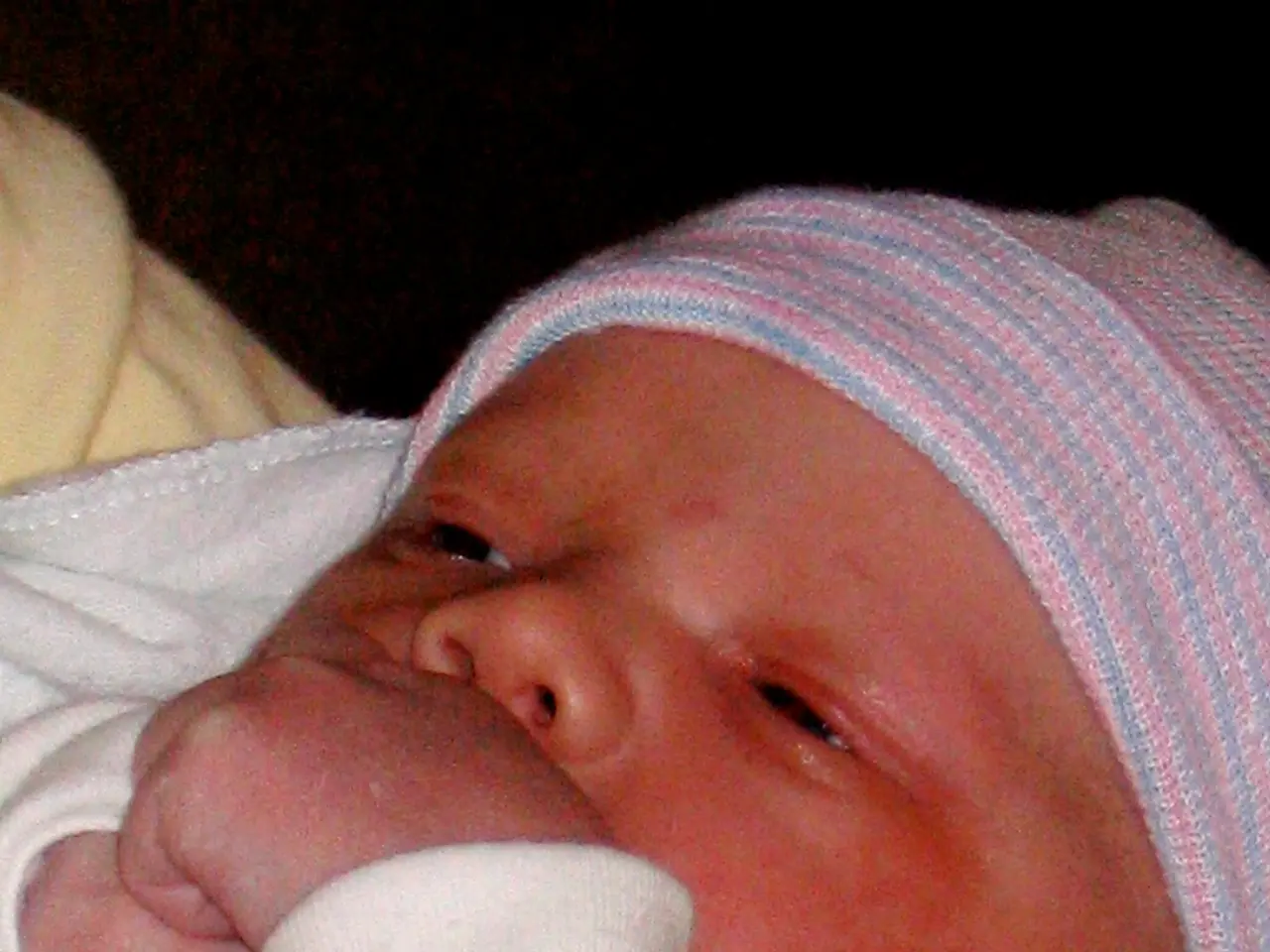Babies typically begin holding up their heads around the age of 4-6 months, according to a timeline.
Babies' head control typically begins to develop around 6 weeks of age as neck and shoulder muscles start to strengthen. By 9 to 12 weeks (about 2 to 3 months), most babies can lift their heads more easily during tummy time, sometimes lifting their chest and beginning to push up with their arms. This progression follows the general cephalocaudal (head-to-toe) motor development pattern, where control of the head precedes trunk and limb coordination.
Promoting Head Control Development
To help babies develop head control, parents can provide daily tummy time, starting as early as possible, as this strengthens neck and shoulder muscles essential for head control. Holding the baby upright briefly can also encourage strengthening of neck muscles. Engaging the baby visually and socially through eye contact, expressive facial expressions, talking, singing, and offering high-contrast toys can stimulate attention and muscle use. Gently encouraging lifting and turning of the head during supervised play can increase muscle coordination.
Supporting the Baby's Head
Supporting the baby's head is especially important during this time. When a baby is in a baby carrier, it is important to ensure that their head is properly supported. During tummy time, it is important to support the baby's body, keeping one hand on the baby's back to prevent them from falling. When the baby is held upright, it is common for them to bob their heads but they cannot comfortably hold up their heads without support at 1 month.
Developmental Milestones
As babies develop better control over their heads, some milestones to look for include rolling from belly to back (4 months), sitting without support (6 months), rolling both ways (6 months), pulling themselves into a sitting or standing position (9 months), cruising by standing and moving from object to object with support (12 months), and beginning to walk (12 months).
Safety Considerations
It is important to supervise the baby at all times during tummy time and to never leave a baby alone during tummy time, as they may roll into or fall asleep in an unsafe position. A baby should not sleep face-down, even after they can roll or lift their head. Regular tummy time promotes motor skill development and can help babies develop some motor skills and reach other developmental milestones.
Consulting a Pediatrician
Because every baby develops at their own pace, some variation is normal, but persistent lack of head control beyond 4 months may warrant pediatric evaluation. Early intervention can often help make up for any lags in a baby's development. If concerned about a baby's development, it is always best to consult a pediatrician.
Babies born prematurely may be slower to reach developmental milestones. In this case, a doctor might assign the baby a corrected age. For example, a baby born 2 months early may reach developmental stages 2 months later than their peers.
A 2020 systematic review found that regular tummy time can help babies develop some motor skills and reach other developmental milestones. By 3 months, most babies can lift their heads and upper bodies during tummy time, and may push up with their forearms to look around.
- To aid in head control development, daily tummy time is recommended, starting early, as it strengthens neck and shoulder muscles.
- Engaging a baby during tummy time through toys, eye contact, and expressions, as well as gently encouraging head movement, can stimulate muscle growth.
- Supporting a baby's head while they are in a baby carrier or during tummy time is crucial, as they cannot comfortably hold up their heads without assistance.
- When consulting with a pediatrician, parents should discuss any concerns about a baby's developmental progress in areas like head control, motor skills, or mental health, especially if they notice a persistent lack of control beyond 4 months.




